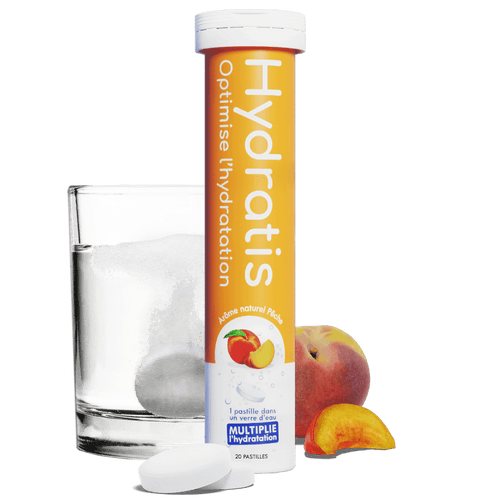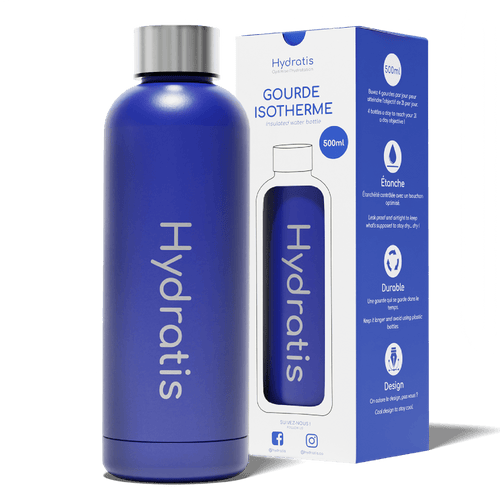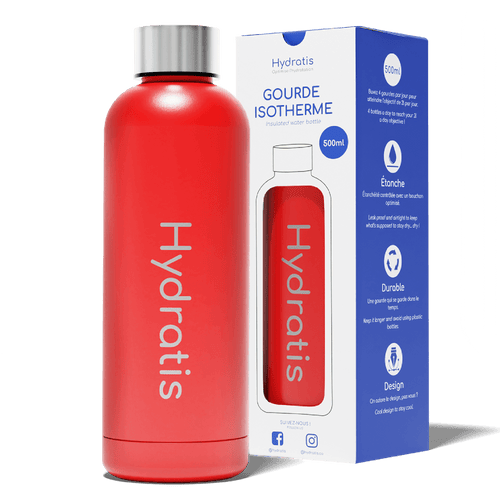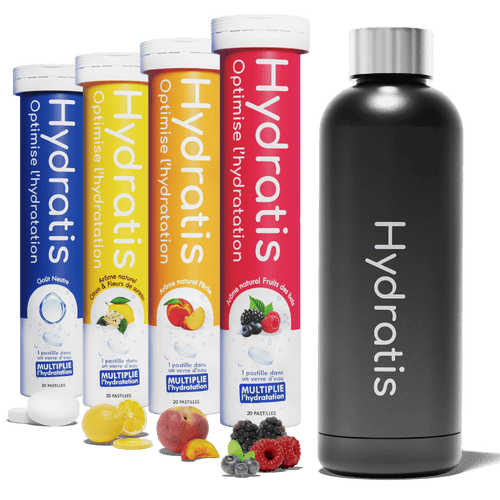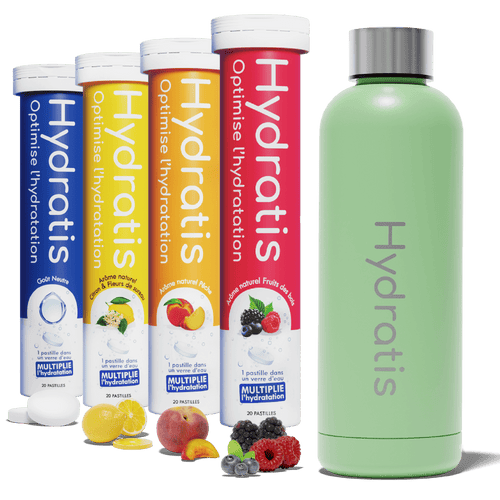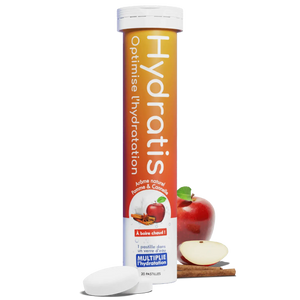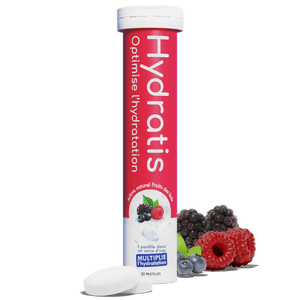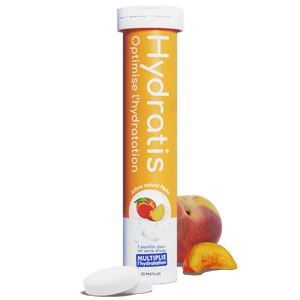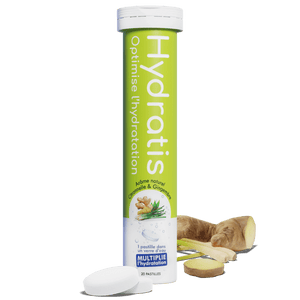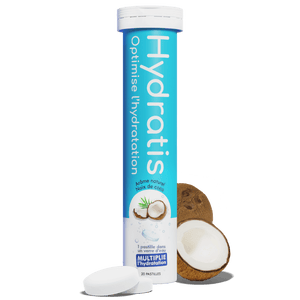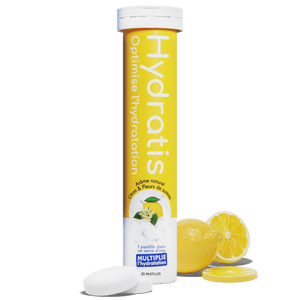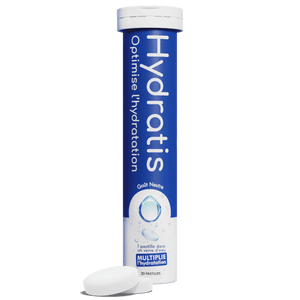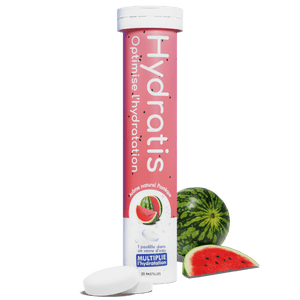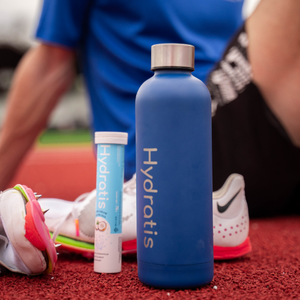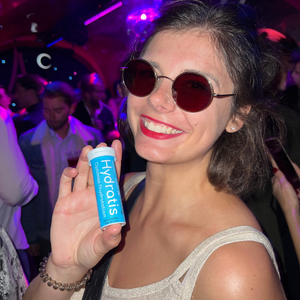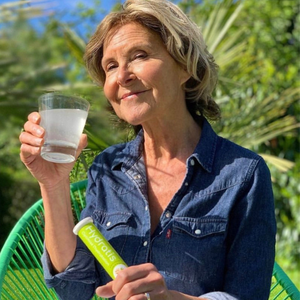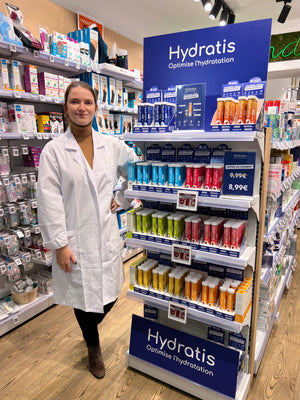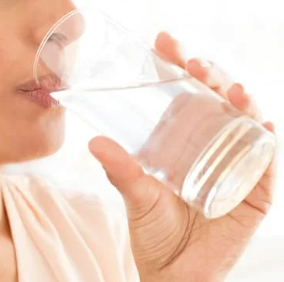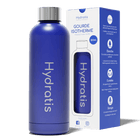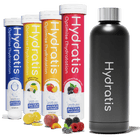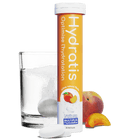
Electrolytes are key elements in health and nutrition. Through this article we will try to explain to you the nature and the role of the different electrolytes in hydration.
From the understanding of these concepts, we can then address the problem of hyponatremia which is a consequence of poor compensation of sodium losses and which can have disastrous consequences.
What is an electrolyte?
The scientific definition of an electrolyte is as follows: it is a chemical element that has an electrical charge when dissolved. In the case of hydration, the electrolytes ingested via different foods or drinks are dissolved in the blood plasma.
There are different electrolytes useful in hydration, these are mainly the following minerals: Magnesium, sodium (salt), potassium, chloride, calcium and phosphorus.
What is the role of electrolytes in the body
Electrolytes in combination with various water-soluble vitamins (Vit: C, B1, B3, B5, B6, B12) help promote hydration and physical performance. Vitamins promote the absorption of electrolytes and therefore potentiate their action.
The main roles of electrolytes can be simplified as follows:
- Magnesium is a hygroscopic element: this means that it attracts water towards it. We therefore understand its interest in hydration.
- Sodium is by far the most important electrolyte, it has different roles: first of all it acts on the pH of the body as a buffer by promoting alkalinization, that is to say it fights against 'acidity. This property is very important, especially at the sports level, because sodium helps to fight against the lactic acid produced during the use of the muscles. It is therefore a key element in endurance (rehydration and alkalinization). Sodium is also the main factor in plasma osmolarity: its concentration allows it to establish a balance in the quantity of water distributed between the intra- and extracellular compartments.
- Potassium is an actor in muscle contraction, a contribution during sport therefore allows to renew reserves and increase endurance.
- Calcium plays a role in the mineralization of bone tissue and neuromuscular excitability: this means that it promotes muscle contraction. We can therefore say that like potassium it is important in endurance.
- Chloride in beverages has a role in water purification and the destruction of microorganisms.
- Phosphorus intervenes in the reactions of energy production by the body and in the respiratory chain of the cells: it is therefore an actor of physical endurance. On the other hand, one acts as a buffer, like sodium, for the acid pH of liquids: sport causes lactic acidity which is buffered by phosphorus and sodium.
Hyponatremia and its risks
Hyponatremia is defined as too low a sodium level in the blood (less than 135mmol/L), it is confirmed by a blood ionogram.
Its causes are diverse: we first find dehydration with all its causes . But you should know that excess water can be a cause of hyponatremia: in fact, when you absorb too much water, it increases blood volume. However, if the water ingested does not contain sodium, this increase in blood volume will only dilute the sodium and we will therefore have a reduced concentration. The body will therefore try to restore the sodium concentration by passing water from the blood to the cells to reduce the blood volume, but in extreme cases the cells explode due to excess water, which can have dramatic, much more serious consequences. than dehydration, going as far as hydraulic coma .
Symptoms and consequences of hyponatremia occur in the following order: the first organ affected is the brain, so we first observe lethargy, mental confusion, and different types of brain dysfunction. This is followed by loss of appetite, muscle weakness, drop in blood pressure and abnormal fatigue. In extremely serious cases one can observe convulsions, muscular contractions up to a coma (total loss of consciousness).
It can therefore be seen that drinking large quantities of clear water during physical exercise can have dramatic consequences. These phenomena of hyponatremia are among others observed in marathon runners: indeed to avoid dehydration it is advisable to drink before feeling thirsty, some therefore drink large quantities of clear water during races in order to stay well hydrated. This has the perverse effect of causing, in the absence of dehydration, hyponatremia due to the phenomenon seen above.
A study conducted on the 2002 Boston Marathon showed that at the end of the race, 13% of runners were hyponatremic due to excess hydration.
The risks of hyponatremia due to excess water are more frequent in sporting contexts but can also occur in periods of great heat due to excess hydration in clear water.
So how do you stay hydrated while preventing hyponatremia?
The solution is simple: during physical exertion or high heat, it is important to stay hydrated in normal doses, favoring isotonic drinks . These are drinks containing a large quantity of electrolytes mentioned above, necessary for physiological balance. The consumption of these drinks makes it possible to compensate for losses during exercise and prevent hyponatremia while remaining hydrated.
Hydratis is the ideal solution for safely hydrating during exercise or even during long periods of heat. Indeed, our lozenges are a concentrate of electrolytes, essential to compensate for losses and maintain maximum physiological balance to stay in top shape throughout the duration of physical effort.
